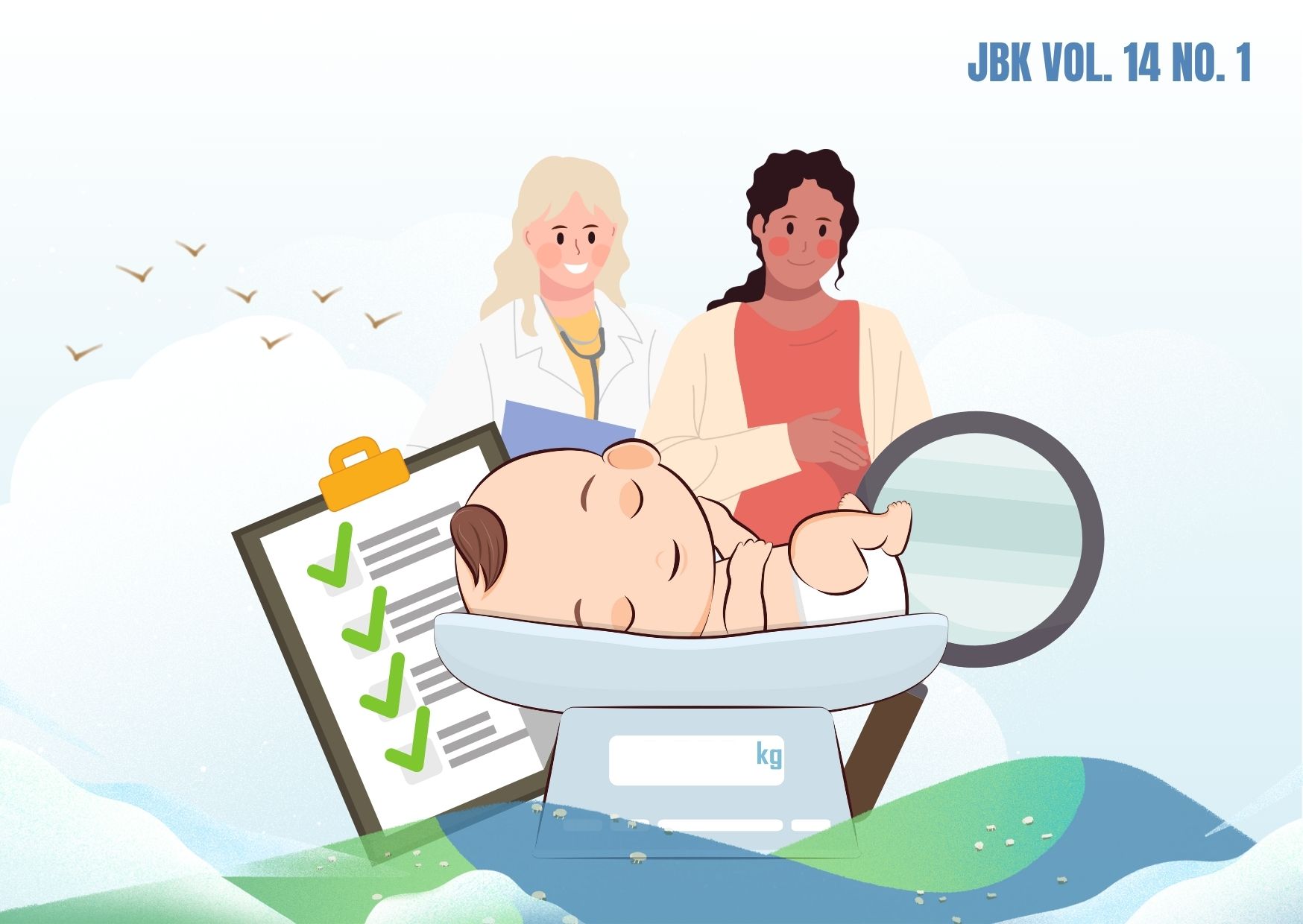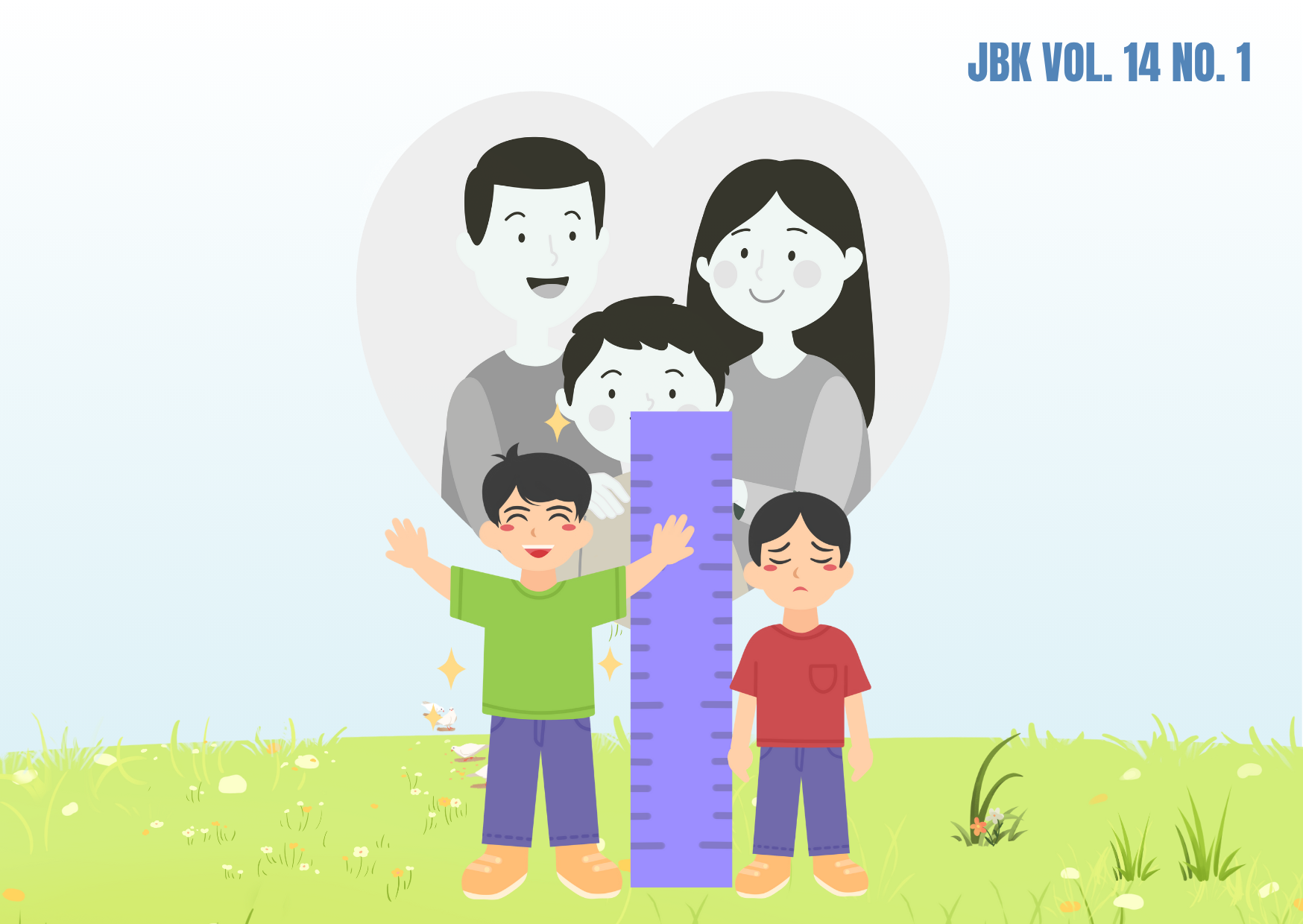SOCIODEMOGRAPHIC FACTOR RELATIONSHIP WITH INFANT SURVIVAL IN INDONESIA
Downloads
Child survival can be reflected in the presence of the Infant Mortality Rate (IMR). Indonesia has an Infant Mortality Rate (IMR) according to the 2017 IDHS, which reaches 24 deaths per 1000 live births. This figure has decreased compared to a survey conducted by the 2012 IDHS, where infant mortality reached 32 deaths per 1000 live births. Even though it experienced a decrease, the IMR in Indonesia was higher when compared to the IMR in other Southeast Asian countries. Socioeconomic factors for individuals, families, and communities, including the influence of infant mortality. Not only that, but infant mortality can also be due to the absence of awareness of maternal health. Thus, this study aims to determine several variables related to survival in infants in Indonesia. This type of research is a non-reactive study. This study uses quantitative analysis and a methodical approach with a cross-sectional approach that takes data from the 2017 IDHS. This study took a sample following the 2017 IDHS with the criteria that mothers who had babies still drank breast milk, were born single, and were still alive after the first three days in Indonesia. The number of respondents in this study was 7,599 mothers with babies. Analysis of the research data using Chi-Square analysis. Bivariable analysis shows that infants' survival has a relationship with the mother's education, type of area, and welfare level. However, infant survival also has no association with the age of the mother and birth attendants. Counseling pregnant women regarding risks, causes,
Abdiana, A., 2017. Determinants of Infant Mortality in Payakumbuh City. Andalas Public Health Journal, 9 (2), pp. 88.
Aisyan, SDS, Jannah, SN and Wardani, Y., 2013. The Relationship Between Family Socio-Economic Status and Perinatal Mortality in the Work Area of Puskesmas Baamang Unit II Sampit Central Kalimantan January-April 2010. Journal of Public Health, 5 (1), pp. 35–44.
Dewi, U., 2015. Sociodemographic Factors with Infant Survival in Indonesia (2007 IDHS Data Analysis). Manuntung Scientific Journal, 1 (2), pp. 172–180.
Dewi, U., Agus Wilopo, S. and Wibowo, T., 2017. Provision of Pralactation Feeding with the Survival of Babies in Indonesia (2007 IDHS Data Analysis). Journal of Reproductive Health, 1 (4), pp. 56–73.
Elisanti, AD, Purnomo, W. and Melaniani, S., 2013. Implementation of Partial Least Square for Toddler Health Status in Indonesia. Journal of Biostatistics and Population, 2 (2), pp.99–107.
Ensor, T., Cooper, S., Davidson, L., Fitzmaurice, A. and Graham, WJ, 2010. The impact of economic recession on maternal and infant mortality: Lessons from history. BMC Public Health, [online] 10 (1), pp. 727. Available at: <http://www.biomedcentral.com/1471-2458/10/727>.
Fitri, A., Adisasmita, A. and Mahkota, R., 2017. The effect of birth spacing on infant mortality in Indonesia, the Philippines, and Cambodia (Health Demographic Survey Data Analysis). Indonesian Journal of Health Epidemiology, 1 (2), pp. 45–52.
Hajarisman, N., Karyana, Y. and Rosiana, D., 2016. The Influence of Health Facilities and Socio-Economic Factors on the Degree of Child Survival through Structural Equation Modeling. ETHOS (Journal of Research and Service), 2008, pp. 233.
Kanmiki, EW, Bawah, AA, Agorinya, I., Achana, FS, Awoonor-Williams, JK, Oduro, AR, Phillips, JF, and Akazili, J., 2014. Socioeconomic and demographic determinants of under-five mortality in rural northern Ghana. BMC International Health and Human Rights, 14 (1), pp. 1-10.
Ministry of Women's Empowerment and Child Protection, 2019. Profile of Indonesian Children in 2019.
Laksana, MP and Syafiq, A., 2014. Determinants of Infant Mortality Rate in Indonesia (Secondary Data Analysis of Indonesian Demographic Health Survey 2012). University of Indonesia.
Mahampang, U., Cahyati, WH and Wahyuningsih, AS, 2011. Mother and Infant Factors Associated with Perinatal Mortality. KESMAS - Journal of Public Health, 7 (1), pp. 41–50.
Napitupulu, A., Yusad, Y. and Jalil, A., 2012. Factors related to the survival of babies being treated at the District General Hospital Labuhan Batu Utara Regency in 2012.
Shiferaw, YA, Zinabu, M. and Abera, T., 2012. Determinant of Infant and Child Mortality in Ethiopia. SSRN Electronic Journal.
Tarigan, IU, Afifah, T., Simbolon, D., Daya, PS, Health, P., Litbangkes, B., Health, K., Effort, P., Society, K. and Health Bengkulu, P., 2017 Factors Associated with Infant Care in Indonesia: A Multilevel Analysis Approach. Journal of Reproductive Health, 8 (1), pp. 103–118.
UNICEF, 2019. Health: Providing the Best Chance of Survival for Children. [online] UNICEF Indonesia. Available at: <https://www.unicef.org/indonesia/id k Health> [Accessed 28 Apr 2020].
Widayanti, DA and Wijayanti, AC, 2018. Factors Associated with Infant Mortality in Boyolali Regency. pp. 689–698.
Copyright©2022 Jurnal Biometrika dan Kependudukan (Journal of Biometrics and Population)
This work is licensed under a Creative Commons Attribution-NonCommercial-ShareAlike 4.0 International License.
1. Copyright of all journal manuscripts is held by the Jurnal Biometrika dan Kependudukan.
2. Formal legal provisions to access digital articles of the electronic journals are subject to the provision of the Creative Commons Attribution-ShareAlike license (CC BY-NC-SA), which means that Jurnal Kesehatan Biometrika dan Kependudukan to keep, transfer media/format, manage in the form of databases, maintain, and publish articles.
3. Published manuscripts both printed and electronic are open access for educational, research, and library purposes. Additionally, the editorial board is not responsible for any violations of copyright law.



































